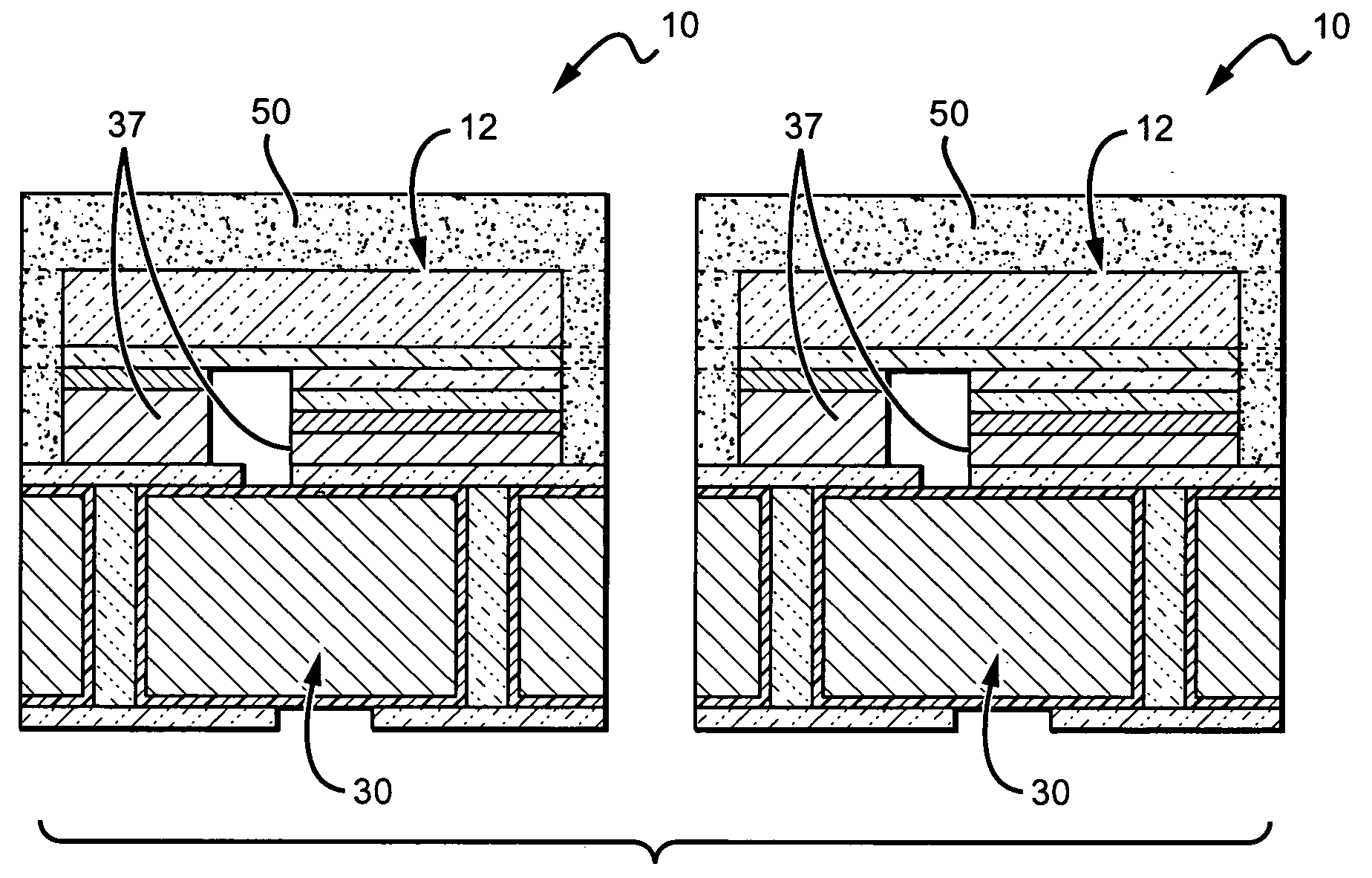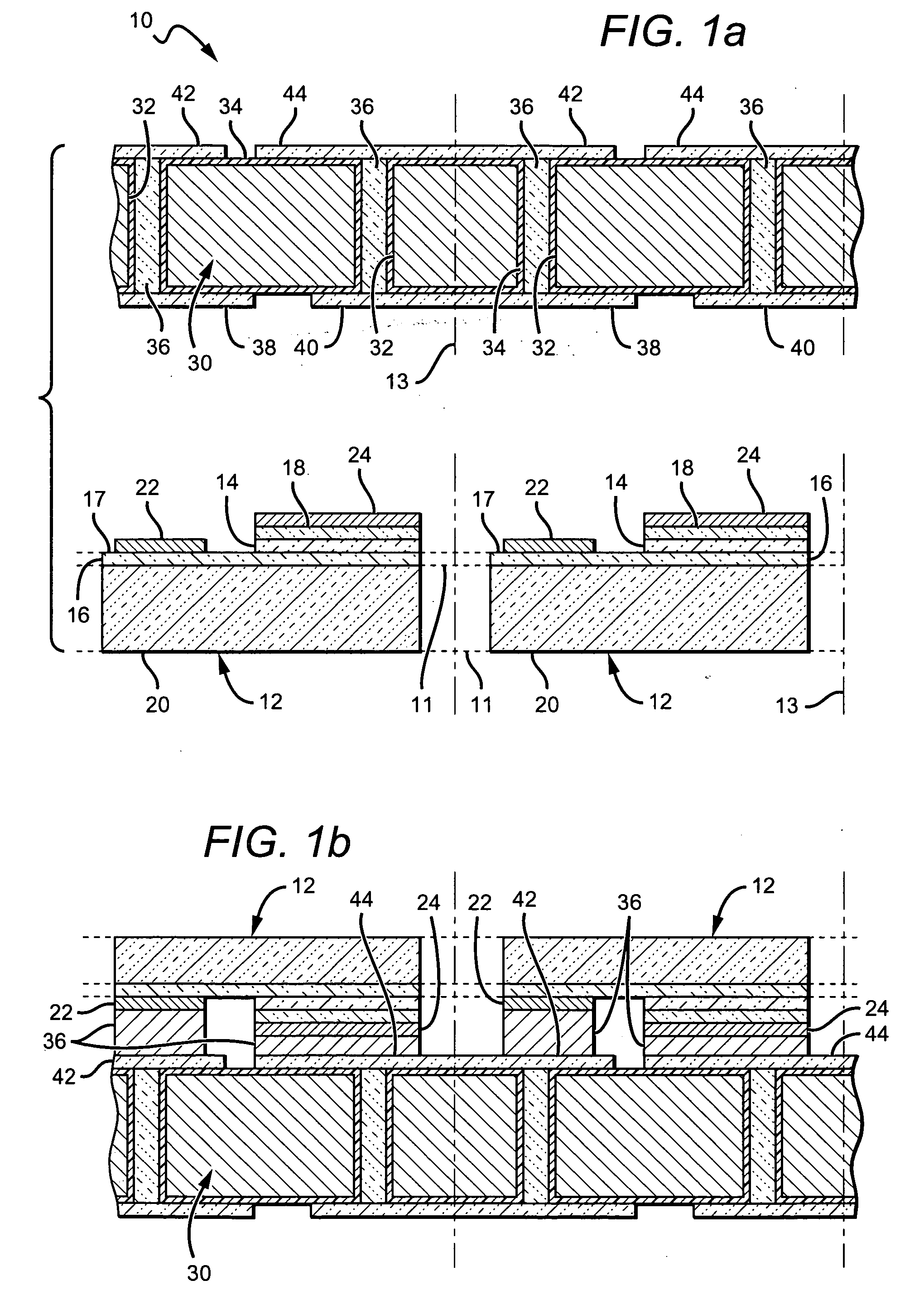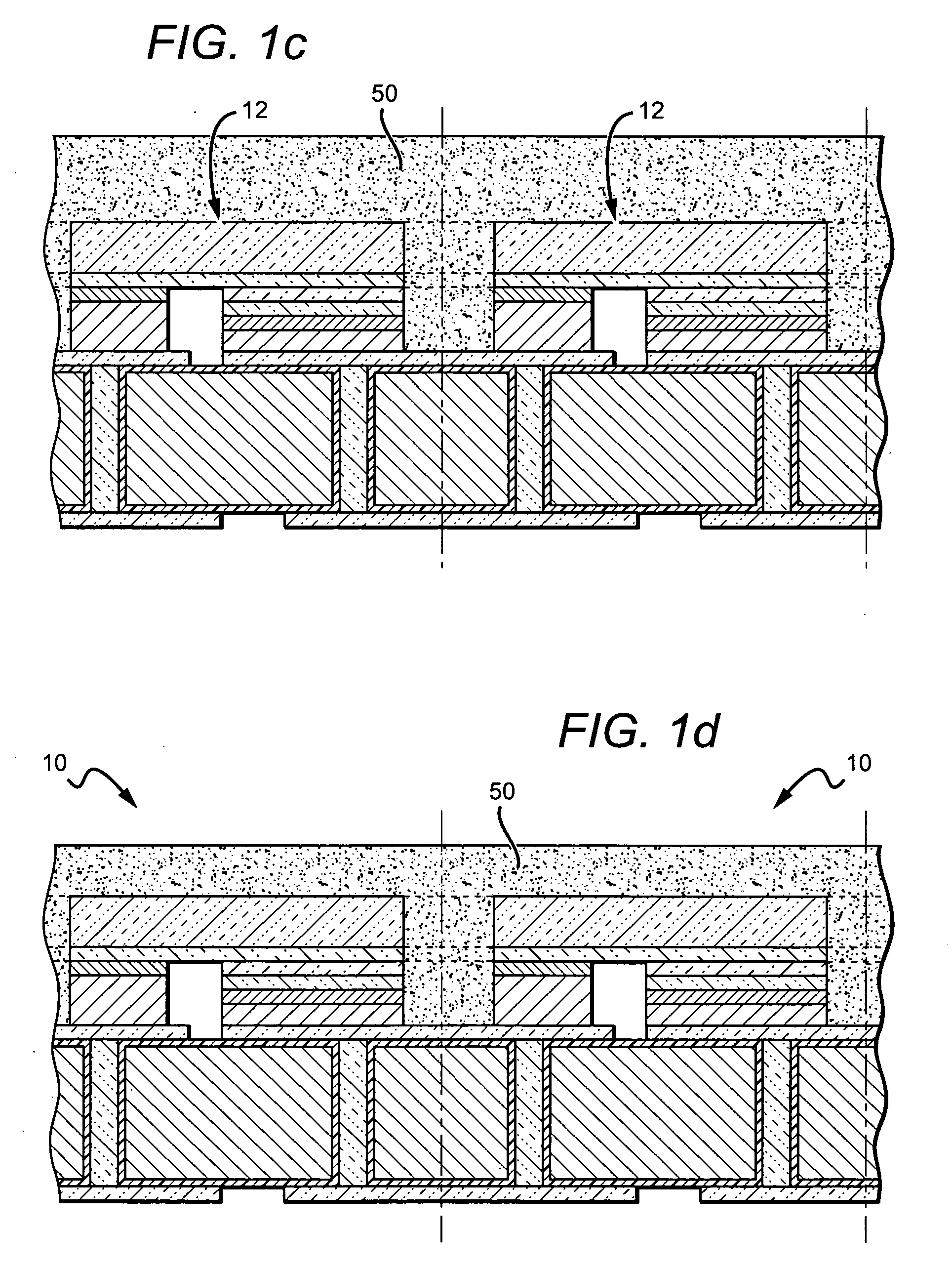Flip-chip phosphor coating method and devices fabricated utilizing method
a phosphor coating and flip-chip technology, applied in semiconductor/solid-state device manufacturing, semiconductor devices, electrical equipment, etc., can solve the problems of difficult to consistently reproduce leds with the same or similar emission characteristics, difficult to control the geometry and thickness of the phosphor layer, and non-uniform color temperatur
- Summary
- Abstract
- Description
- Claims
- Application Information
AI Technical Summary
Benefits of technology
Problems solved by technology
Method used
Image
Examples
Embodiment Construction
[0034]The present invention provides fabrication methods that are particularly applicable to wafer level coating of semiconductor devices such as LEDs. The present invention also provides semiconductor devices, such as LEDs fabricated using these methods, and related LED packages and LED arrays. In particular the present invention provides for methods of making devices and devices that can be surface mounted and are wire-bond free. A curable blanket coating is provided over the devices that can then be thinned or planarized without the need for gaining electrical access to contacts through the cured material following planarization. Instead, electrical contact is made to the device from the surface opposite the blanket coating. The resulting coating on the top of the devices is continuous and unobstructed by structures such as contacts, bond pads, conductive paths, etc. The coating provides a surface that is particularly adapted for the direct mounting of additional structures, such...
PUM
 Login to View More
Login to View More Abstract
Description
Claims
Application Information
 Login to View More
Login to View More - R&D
- Intellectual Property
- Life Sciences
- Materials
- Tech Scout
- Unparalleled Data Quality
- Higher Quality Content
- 60% Fewer Hallucinations
Browse by: Latest US Patents, China's latest patents, Technical Efficacy Thesaurus, Application Domain, Technology Topic, Popular Technical Reports.
© 2025 PatSnap. All rights reserved.Legal|Privacy policy|Modern Slavery Act Transparency Statement|Sitemap|About US| Contact US: help@patsnap.com



